SECTION 204-00: Suspension System — General Information
| 2014 Mustang Workshop Manual
|
DESCRIPTION AND OPERATION
| Procedure revision date: 01/24/2013
|
Camber and toe are adjustable on the front suspension systems. Front camber is adjusted through the use of a service repair kit (3B236). Caster is preset at the factory and should only be adjusted, through the use of a service repair kit (3B236), after all other possible sources have been inspected and corrected as necessary. Front toe is adjusted by the use of the front wheel spindle tie rod.
Camber
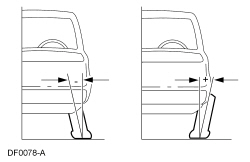
Camber is the vertical tilt of the wheel when viewed from the front. Camber can be positive or negative and has a direct effect on tire wear.
Caster
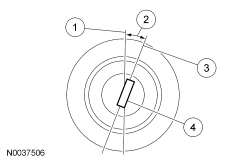
| Item | Description |
|---|---|
| 1 | True vertical |
| 2 | Positive caster angle |
| 3 | Strut centerline |
| 4 | Pivot centerline |
Caster is the deviation from vertical of an imaginary line drawn through the pivot points (top of strut and lower ball joint), when viewed from the side. The caster specifications in this section will give the vehicle the best directional stability characteristics when loaded and driven. The caster setting is not related to tire wear.
Toe
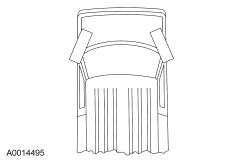
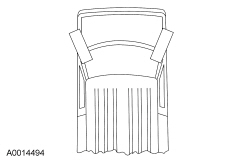
The vehicle toe setting affects tire wear and directional stability.
Incorrect Thrust Angle (Dogtracking)
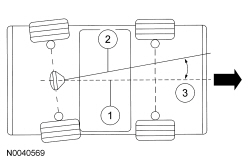
| Item | Description |
|---|---|
| 1 | Vehicle centerline |
| 2 | Axle centerline |
| 3 | Thrust angle |
Incorrect thrust angle (also known as dogtracking) is the condition in which the rear axle is not square to the chassis. Heavily crowned roads can give the illusion of dogtracking.
Wander
Wander is the tendency of the vehicle to require frequent, random left and right steering wheel corrections to maintain a straight path down a level road.
Shimmy
Shimmy, as observed by the driver, is large, consistent, rotational oscillations of the steering wheel resulting from large, side-to-side (lateral) tire/wheel movements.
Shimmy is usually experienced near 64 km/h (40 mph), and can begin or be amplified when the tire contacts pot holes or irregularities in the road surface.
Nibble
Sometimes confused with shimmy, nibble is a condition resulting from tire interaction with various road surfaces and observed by the driver as small rotational oscillations of the steering wheel. For wheel and tire diagnosis, refer to Section 204-04 .
Poor Returnability/Sticky Steering
Poor returnability and sticky steering is used to describe the poor return of the steering wheel to center after a turn or steering correction is completed.
Drift/Pull
Pull is a tugging sensation, felt in the steering wheel, that must be overcome to keep the vehicle going straight.
Drift describes what a vehicle with this condition does with hands off the steering wheel.
Poor groove feel is characterized by little or no buildup of turning effort felt in the steering wheel as the wheel is rocked slowly left and right within very small turns around center or straight-ahead (under 20 degrees of steering wheel turn). Efforts may be said to be "flat on center."